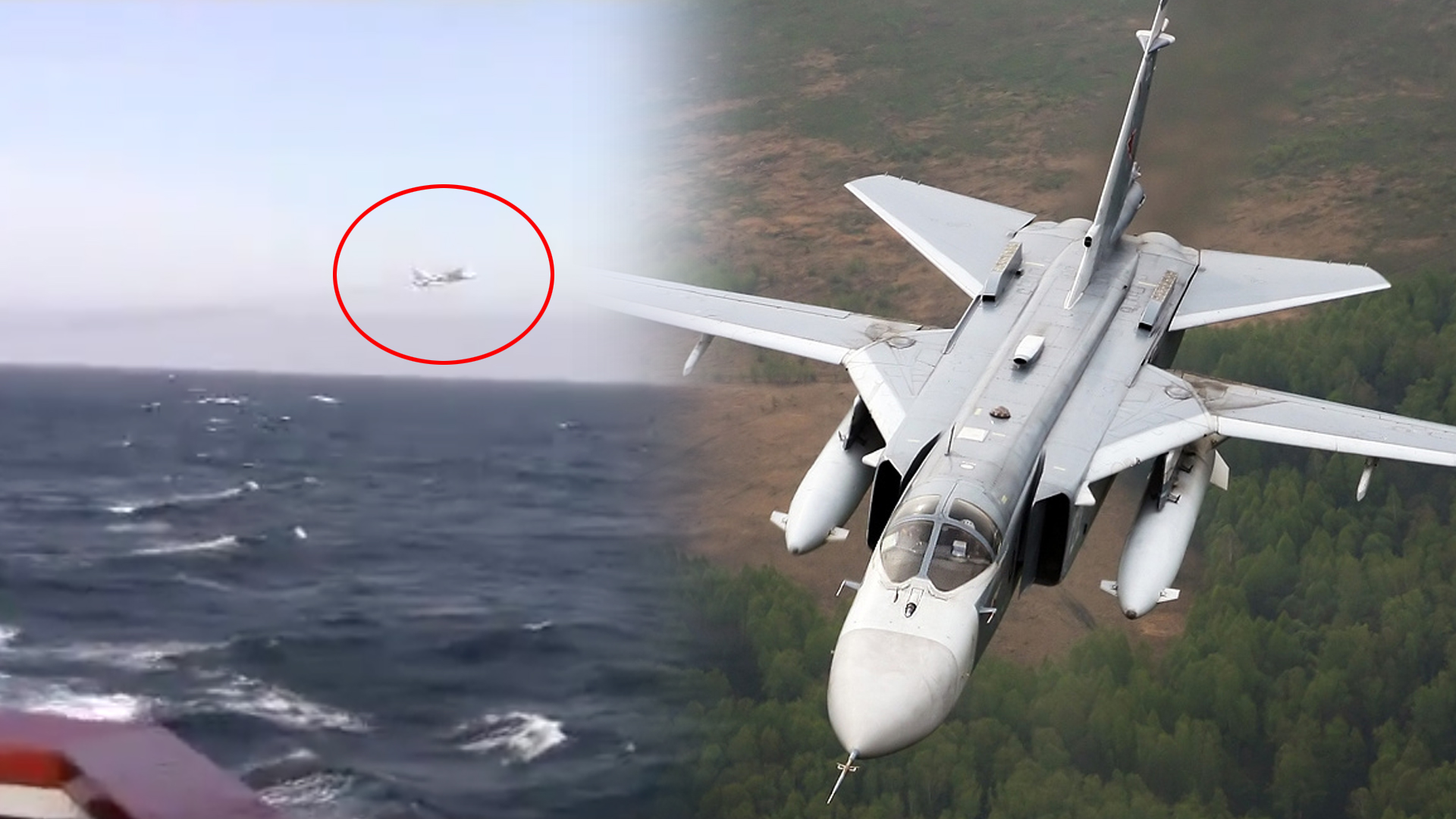

A Russian fighter jet buzzed an American destroyer operating in the Black Sea on Sunday, according to U.S. Navy officials.
The Navy’s 6th Fleet shared a video of the encounter on Twitter that showed a Russian Sukhoi SU-24 Fencer aircraft flying low over the USS Donald Cook in international waters on Jan. 31. Officials said the Navy “routinely operates in the Black Sea to reassure NATO Allies & partners and ensure security and stability in the region.”
The Arleigh Burke-class destroyer moved into the Black Sea on Jan. 23 to begin drills with NATO and was joined on Sunday by the USNS Laramie, a refueling and replenishment vessel. The ships, along with the USS Porter, have been operating in the area for several weeks.
The Donald Cook tried twice to radio the Russian pilot but received no response, said Cmdr. Kyle Raines, a spokesman for U.S. European Command. He said the incident, which lasted about 10 minutes, saw the Fencer comes as close as 100 yards from the ship at roughly 200 feet above the water.
“The unnecessary proximity of the Russian Su-24’s actions were inconsistent with good airmanship and international norms and standards,” Raines said.
Russia’s state-funded TASS news agency reported the country’s Black Sea Fleet had been monitoring the Donald Cook’s movements for weeks. Russian military officials claim the American warships bring instability to the region, which is bordered by Russia, Ukraine, Turkey, and other countries, but American officials say the ships’ presence “further strengthen interoperability and demonstrate resolve to Black Sea peace and security.”
The U.S. has had its share of run-ins with Russia in recent years.
In 2019, a Russian destroyer nearly rammed into a U.S. missile cruiser in the Philippine Sea, forcing the American captain to take drastic action to avoid a collision. Both countries had a brief spat in the Sea of Japan in Nov. 2020, and U.S. military aircraft were dispatched several times last year in response to Russian fighters moving into Alaska’s Air Defense Identification Zone, a boundary claimed by both the U.S. and Canada requiring aircraft to identify themselves and state their intentions.
Still, this latest incident seems tame compared to the Donald Cook’s 2016 run-in with the Russian military in the Baltic Sea. Back then, the destroyer endured far more aggressive moves from Russian pilots, including two Su-24s lining up for a “simulated attack profile” on April 11, according to officials, and a Russian helicopter flying multiple passes around the ship at low altitude the following day.
This story was updated after publication with additional information from a U.S. European Command spokesman.
